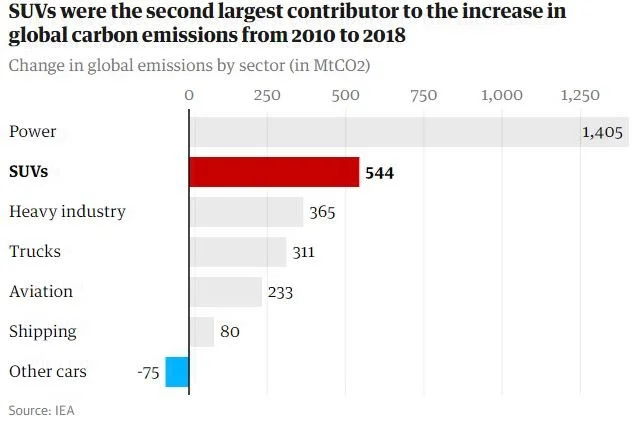
Why Ireland Must Ban Hybrids & SUVs Alongside ICEs In 2030
Transport is a key battleground for climate action both in Ireland and around the world, with the sector accounting for 20% of the Republic’s total greenhouse gas emissions.
Chief amongst this battleground has been addressing the emissions created by the country’s approximately 2.13 million passenger cars, which create around 6 million tonnes of CO2 alone each year.
While there has been a 472% increase in the sale of electric vehicles since 2018, we have also seen that current incentives – alongside widespread misinformation and greenwashing – have maintained the dominance of internal combustion engines in new car sales.
Ireland has committed to ceasing the sale of new internal combustion engine (petrol and diesel) vehicles by 2030, but this approach will still ensure that ICEs will remain on roads long after this date without significant changes in policy.
Today we look at the bold changes we believe are needed for Ireland to step up to its legacy of appalling transport emissions, and ensure a just climate transition in the time we have left to avert the worst outcomes of the Climate Crisis.
Hybrid Ban
There was much furore this week when the Irish Government announced that it will be removing the €2,500 grant for plug-in hybrid vehicles from 1st January 2022.
In response to the announcement, the Society of Irish Motor Industry (SIMI) stated that this was an “anti-consumer, anti-environment decision”.
However, we at IrishEVs thoroughly welcome the decision, as it highlights plug-in hybrids – and all hybrids for that matter – for what they are: ICEs in disguise.
SIMI may well see PHEVs are “an important stepping-stone to going fully electric,” but this doesn’t recognise the true severity of the Climate Crisis that we are already facing – nor what is yet to come if we do not dramatically slash emissions.
Nor does it recognise that time and again PHEVs have repeatedly been shown to generate greater emissions in the real world than manufacturers have claimed. In fact, a 2020 study by Transport & Environment found that in battery-charging mode, PHEVs emitted three to 12 times more emissions than advertised.
The analysis found that, on average, PHEVs generated as much as two-and-a-half times more carbon dioxide emissions than official tests claim.
This has been compounded by a 2021 report by consumer advice group Which?, which showed that on average PHEVs burn 61% more fuel than official tests show.
Couple this with multiple studies – such as those from the University of California and The Miles Consultancy – which suggest that PHEVs are rarely run in electric mode, and the fact that PHEVs have significantly higher running costs than EVs, and you soon run out of any benefits that they might potentially offer.
It is also essential to consider that hybrid vehicles are being used to sell a harmful myth to consumers; that they are electric, which they are not. And that they are clean, which they are not. This has created room for the deception of ‘self-charging’ hybrids, and allowed manufacturers to profit from increasing pollution by praying on the good intentions of consumers.
Battery electric vehicles are substantially more efficient than any other form of vehicle, including hybrids. If we are serious about tackling the Climate Crisis, electrification of transport is essential. Credit: Transport & Environment
It is wholly inescapable that all hybrids are still reliant on an internal combustion engine, and therefore are reliant on the extraction, production, transportation and burning of fossil fuels.
In fact, even their biggest proponents such as Toyota, have been forced to admit that they should not be run – and do not work – without fossil fuels being present.
If there ever was a time for hybrids as a transition technology to battery electric vehicles, it has long since passed, and the only entities banging the drum for them are those who are trying to bamboozle consumers with the promise of ‘clean,’ ‘electrified’ vehicles in a bid to deceive them by aligning these ICEs with actual electric vehicles. See our article Electric Not Electrified for a breakdown of this issue.
With the fact that these are ICEs in disguise and perpetuate the use of fossil fuels, we believe that it is imperative that the Irish Government should include all hybrids in the internal combustion engine ban from 2030.
SUV Ban
In 2020, 13 of the top 20 cars sold in Ireland were an SUV.
This is a trend that has been witnessed worldwide, as car manufacturers have narrowed their ranges in order to promote SUVs, and then made more and more SUVs, crossovers and compact crossovers to ‘meet demand’.
The truth is that car manufacturers have promoted SUVs primarily because of tax concessions offered in the US and in order to avoid fuel economy regulations.
They have become so ubiquitous that in 2019 SUVs accounted for 40% of all car sales worldwide for the first time, and the number of SUVs on the road is now eight times higher than a decade ago.
Yet, they are also the second largest contributor to the increase in global carbon emissions from 2010-2018 and emit more than 700 megatonnes of CO2 each year – equivalent to the entire output of the UK and the Netherlands combined.
In fact, if SUV drivers were a single nation, it would rank as the seventh largest emitter in the world.
In addition to their horrific climate impact, they are also more deadly than other forms of passenger cars – and are twice as likely to kill pedestrians and cyclists at collisions above 64kph than smaller, more traditional cars.
The link between SUVs and rising carbon emissions is inescapable and clear. Credit: The Guardian & IEA
It is ironic, then, that they are often sold on the basis of safety, and the promise to protect the inhabitants – without mention of just how harmful they can be to other road users or pedestrians.
Even then, the idea that they are safer is also a marketing gimmick.
SUVs are considerably more fatal to pedestrians, cyclists and other road users than traditional, smaller cars. They prevalence and safety concerns should be alarming. Credit: New Scientist
When subjected to the famous Moose Test – an evasive manoeuvre test designed to assess how well a vehicle can avoid a suddenly appearing obstacle – SUVs consistently fail to meet safe standards, that threaten to harm other road users, or the occupants of the vehicle itself due to a higher likelihood of roll-overs and understeering.
There are significant road safety and emissions gains to be made by including SUVs in the 2030 new car sales ban, and frankly such legislation may be the only way to hold car manufacturers accountable for promoting these vehicles so prominently.
EV & Renewable Incentives
While bans may be well-and-good, at IrishEVs we believe that the carrot is more powerful than the stick.
As such, we would urge the Irish Government to step up the incentives on offer for clear, battery-powered transport alongside its prohibition of ICEs, hybrids and SUVs.
Chief amongst the incentives that could make the biggest impact on reversing the current use of fossil fuel vehicles – particularly the 170% increase in the number of kilometres driven by diesel cars between 2008-2018 – is focusing on second-hand EV supply.
The average cost of a new EV to the consumer is €47,300 – just slightly below the average annual salary of €49,000. This demonstrates that, while the incentives for new EVs are welcome, they are not nearly enough and only really benefit those with suitable credit.
As such, we have called on the Government to support the second-hand market to accelerate EV adoption, especially amongst lower-income families and individuals.
In addition to cutting emissions, this will also be hugely beneficial in reducing energy poverty. As carbon taxes necessarily increase in the face of the Climate Crisis, so too will the cost of fossil fuels, and a whole swathe of society will be left behind with spiralling costs that further prohibit the transition to clean EVs.
The current top-down approach for incentives simply isn’t enough – and frankly pales in comparison to other nations.
Instead, the Irish Government must step up in advance of 2030 to increase the supply of second-hand EVs, to ensure that lower income people are able to avail of the same or better incentives to make the switch to EVs, and to incentivise clean energy adoption alongside the transition to EVs.
At IrishEVs, we believe that there is a huge, discussed opportunity to promote renewable energy adoption alongside EV adoption. By offering government loans, or incentives which offer greater savings on EVs and rooftop solar when both are purchased together – and not tethering these exclusively to new cars, but instead opening them up to second-hand EVs – the Irish Government can address emissions, energy poverty and energy supply in one fell swoop.
Driving an EV is an obvious way to reduce personal carbon footprints - but must not come at the cost of increasing energy poverty. Credit: Centre for Research into Energy Demand Solutions
While some steps forward have been made in climate policy over recent years, there is a broad and growing sense that the Irish Government has to be dragged to the table, and even then it will drag its feet in actually implementing action.
We can leave no stone unturned in the face of the Climate Crisis, and it is time for the Irish Government to step up and be bolder in its actions well in advance of the 2030 bans.
What To Read Next
Unveiling The Hybrid And “Self-Charging” Myth
Discover why hybrid cars are more harmful to the environment and cost more than EVs, and why you shouldn't believe the myth of "self-charging" vehicles
SUVs Are Killing The Planet
SUVs are twice as likely to kill a pedestrian in a collision and are the second largest cause of the global rise in carbon dioxide emission over the past decade.








